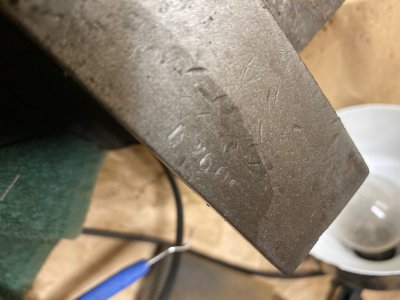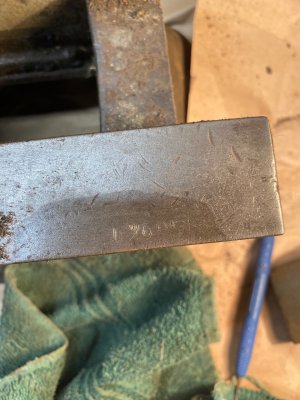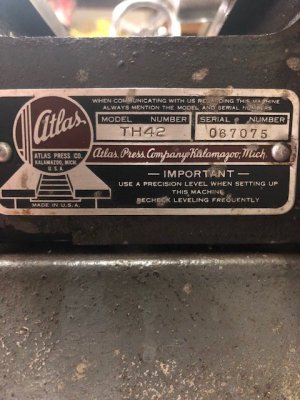- Joined
- Dec 25, 2011
- Messages
- 10,525
Is there a letter "S" to the right of the serial #? Or could the "5" be an "S"? Maybe make a closeup photo of the serial number.
The legs are the wider asymmetrical ones like found on the 10F. All of the photos I've seen of 10D's show the symmetrical rectangular ones. So maybe 1938 just before the 10F came out. And the horizontal countershaft is later, too. Generally associated with the 10F. But the 5/8" lead screw does make it a 10D.
Is the milling attachment also home made?
The legs are the wider asymmetrical ones like found on the 10F. All of the photos I've seen of 10D's show the symmetrical rectangular ones. So maybe 1938 just before the 10F came out. And the horizontal countershaft is later, too. Generally associated with the 10F. But the 5/8" lead screw does make it a 10D.
Is the milling attachment also home made?




